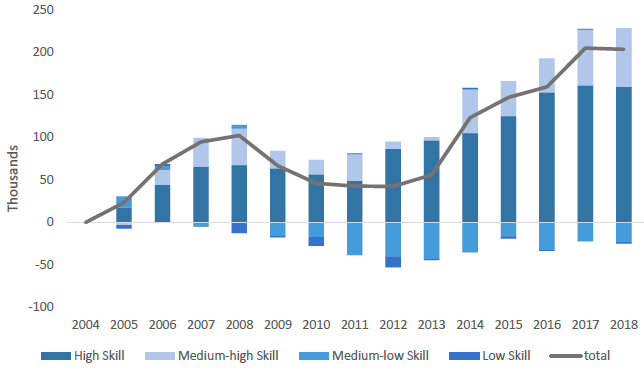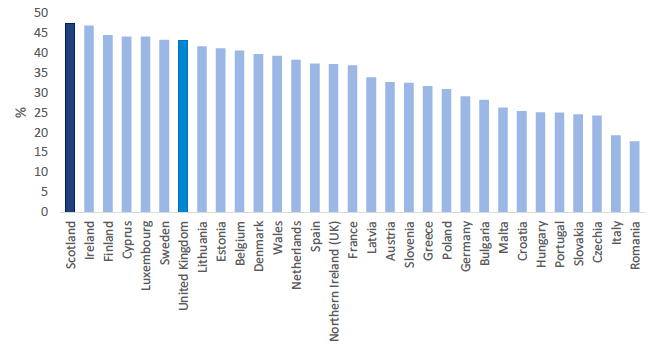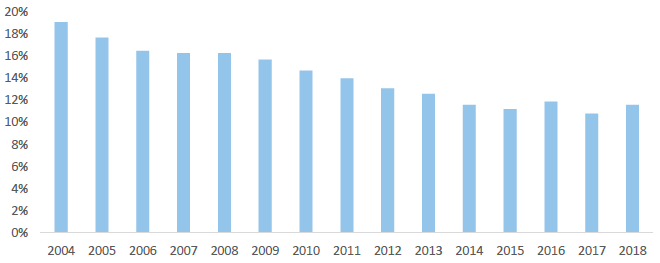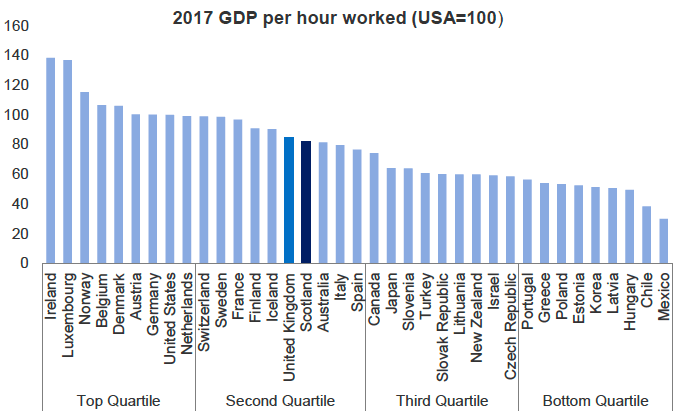Future Skills Action Plan for Scotland: evidence and analysis annex
An evidence paper to accompany Scotland’s Future Skills action plan.
The Role of the Skills System in Scotland’s Labour Market
92. Scotland’s skills system plays a crucial role in the labour market. Data from the Annual Population Survey suggests that of the net increase in employment in our economy over the past 14 years, all jobs have been either high skilled (e.g. professional occupations) or medium-high skilled (e.g. skilled trades) (Figure 7).
Figure 7: Cumulative increase in occupation skills level of employment (16+), 2004 to 2018, Scotland

Source: Scottish Government (2019), Regional Employment Patterns, May 2019.
93. However, some evidence suggests a growing trend of job title inflation – where jobs previously categorised as low skilled are increasingly given new job titles associated with medium/highly skilled.[82] This may mask the growth of low skill and low productivity work in Scotland, with little improvement to wage levels.
94. Scotland now has a highly qualified and highly skilled workforce and this has been improving over time. In 2018, Scotland had more people (47.4%) aged 25-64 who are tertiary level (levels 5-8) educated than any other EU country (Figure 8).
Figure 8: Percentage of population (25-64) who are tertiary level educated, EU Countries, 2018

Source: EUROSTAT (2019), Proportion of tertiary level educated people aged 25-64 year olds, Apr. 2019.
95. In the 12 years to 2015, the proportion of Scotland’s workforce with low or no qualifications has declined steadily (Figure 9). However, progress in reducing low or no qualifications has stagnated in the past 3 years and rose between 2017 and 2018.
Figure 9: Percentage of population (16-64) with low or no qualifications, 2004-2018, Scotland

Source: Scottish Government, Regional Employment Patterns, May 2019.
96. Although demand for skills is driven by economic growth, skills development and a better alignment between skills demand and supply can also boost productivity and economic growth.
97. However, Scotland’s overall strong recent record on education and skills has not transferred to productivity performance. Although Scotland’s post-recession productivity performance has compared well against the UK – since 2007 productivity in Scotland has grown 10.8%, compared to growth of 2.7% in the UK[83] – when compared internationally, Scotland’s productivity has shown little progress in the past decade, remaining 16th among the OECD from 2007 to 2017 (Figure 10).
98. Lower productivity growth is not confined to Scotland or the UK. Productivity growth in the Euro area and for advanced economies as a whole has been markedly low compared with 20 years ago. For the Euro area it was around 0.5% in 2016 compared with approximately 2% in 1996. Explanations centre around a reduced rate of innovation and adoption of new technology than in the past.[84]
Figure 10: Scotland's productivity rank among OECD member countries, 2017

Source: Scottish Government (2019), International Comparisons of Productivity, Feb. 2019.
Contact
Email: Dominic.Mellan@gov.scot
There is a problem
Thanks for your feedback